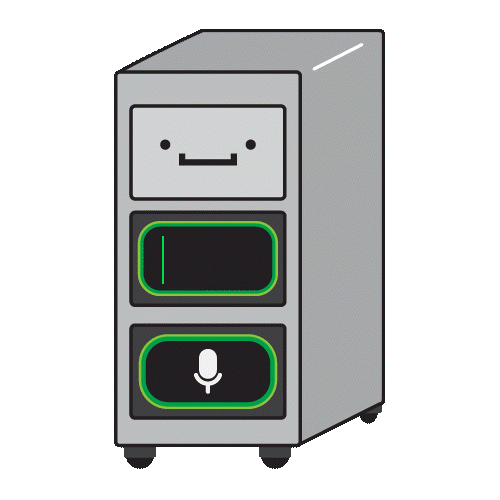Notes and image credits for "The Boring Revolution"
My talk from Explorance World 2025
If we’re headed for a Singularity, it is not going to be a grand, exciting revelation of the fate of humankind, but a more mundane Management Singularity, in which we shift from one set of technologies that glue organizations together to another.
— Henry Farrell, The Management Singularity: LLMs will transform the world - but quietly
The Boring Revolution
How AI Will Change Education and the Workplace, and Why You Might Not Even Notice
What will using the transformer-based cultural technology we call generative AI feel like after it loses its novelty? Not after the singularity, mind you. All the arguing about superintelligence has become boring, at least to me.
Instead, I’ve been thinking about life after the management singularity when large AI models join past revolutionary information technologies like double-entry bookkeeping, the filing cabinet, and the digital spreadsheet as tools we use every day at work without thinking about them as technology, or even noticing them much at all. In other words, what happens when the “generative AI revolution” becomes boring?
To my good fortune, friends at Explorance thought that concept would make for a good keynote at their annual conference. So, this past Tuesday, people attending Explorance World 2025 heard me talk about the boring revolution and why feedback tools and processes are key for organizations trying to figure out how to use AI effectively.
My thanks to Arvind Narayanan of AI Snake Oil for providing critical feedback on an early draft, suggesting that it read like I was “implicitly assuming a top-down model where management drives adoption.” This is the opposite of what I wanted to communicate, so I revised the talk to make my model for organizational change explicit: those in the lower and middle ranks of organizations should lead the adaptation and adoption of these powerful social tools.
I am grateful to Anastasia Tsimiklis, Samer Saab, Samer Jaffar, Ian Ehninger, and everyone involved in the conference for the opportunity. As I said in the talk, I’ve worked with Explorance since 2008, and I have only grown more impressed with the company in the years since.
Thanks to everyone who attended the talk, and especially those who asked hard and interesting questions at the end.
Below are the references and image credits I forgot to share as a link at the end of the talk.
If you have friends and colleagues who might be interested in thinking about AI as a boring revolution, please…
Motion Design with Phillustrations
I don’t use AI generators to create images for this blog or my talks. You can read why here.
As I often do when trying to visualize some idea about AI, I worked with Phil Scroggs, the principal illustration / graphic and motion designer at Phillustrations, to develop images for the talk.
He created this filing cabinet with a text box and a voice interface illustrates something our constant comparisons between machine and human intelligence obscure: large language models and other forms of generative AI are powerful tools that allow people to use natural language to interact with data.
The technology this cute graphic represents is revolutionary. But over the course of some decades, these transformer-based confabulators may come to seem boring, like a filing cabinet. That’s the premise of the talk, anyway.
Ducks and Loops
I used the famous image of the duck/rabbit as a way to kick off a discussion of how we perceive AI.

Phil colorized the duck/rabbit, making it more lively.
The messy complexity of organizational change was a theme of the talk. I get irritated at clean, simple graphics that suggest that feedback loops are easy and that deciding how to implement digital technology is just a matter of applying abstract principles of planning. Here is what Phil and I came up with for what happens when a simple model of a feedback loop meets the real world.
Phil also worked up some clean, simple graphics to illustrate some of my messier points. This one is an abstraction from the figure from AI as Normal Technology Arvind Narayanan and Sayash Kapoor (see below).
This is an abstract way to show the processes of adoption and adaptation playing out in cycles of innovation and diffusion. It framed my stories about electrification and autonomous vehicles as lessons for anyone believing that the social impacts of these new large AI models will happen soon. It set me up to quote my favorite “law” about predicting or estimating timelines for AI, or for that matter, timelines for any digital technology.
Books
After making a serious joke about books as a purpose-built technology for understanding complicated topics, I recommended two, holding up physical copies as I talked about them,
AI Snake Oil: What Artificial Intelligence Can Do, What It Can’t, and How to Tell the Difference (2024) by Arvind Narayanan and Sayash Kapoor.
From its explanation of artificial intelligence as an “umbrella term” to its exploration of uncertainty about its future development, I don’t know of a better introduction to AI. The idea of AI as boring technology owes a lot to their framework and ideas. In the talk, I used this figure from their paper AI as Normal Technology.
The original draft of the talk included a discussion of Herbert Simon and Stafford Beer, which I cut for time. I don’t think I even mentioned cybernetics. But I did wave around this book and told everyone to buy it.
The Unaccountability Machine: Why Big Systems Make Terrible Decisions - and How The World Lost its Mind (2024) by Dan Davies.
Three books I did not mention, but informed my understanding of the history I talked about are:
The Visible Hand: The Managerial Revolution in American Business (1977) by Alfred Chandler.
Control through Communication: The Rise of System in American Management (1993) by JoAnne Yates.
The Filing Cabinet: A Vertical History of Information (2021) by Craig Robertson
As the epigraph suggests, the premise for the talk came directly from The Management Singularity by Henry Farrell, who is part of a group of writers arguing that large AI models are best understood as a social and cultural technology.
Journalism
My talk drew on high-quality journalism for examples of how organizations are using technology, starting with this article from The Markup.
The Verge has the best technology podcasts. I played clips from two different episodes of Decoder, with Nilay Patel. This interview with Paul Bascobert of Reuters and this one with Sowmyanarayan Sampath of Verizon.
Art
I showed an image and read part of the poem “Jimmy Jet and his TV Set” from Shel Silverstein’s Where the Sidewalk Ends to talk about the way our current anxieties about screens have a history.
And I used this image of HAL from 2001: A Space Odyssey to talk about AI and surveillance.
Those two images are not in the public domain. Since their creators are long dead, I don’t feel bad about using them for educational purposes without permission.
Images from the public domain
Here are three other images I used, all from Wikimedia Commons.
Does it get any more boring than a filing cabinet?

After years of predictions that autonomous vehicles will arrive in a matter of months, it appears this is really happening. You can now book a Waymo vehicle in Austin or Atlanta on the Uber app. On the day I gave the talked, Uber announced plans to operate AVs in London sometime in 2026.
My bold prediction is that—hold on, let me take into account Hofstadter’s Law— by 2030 2035 2040 autonomous vehicles will feel like a boring part of life in a modern city.

The history of electrification is often simplified and distorted into a story about the genius who invented the light bulb. A more detailed and expansive account of electrification is that Thomas Edison misunderstood a great deal about the technology he helped create. It took decades and thousands of people working for many different organizations to begin to realize the economic and social value of electricity. If generative AI is a general purpose technology, it will take a similar process of innovation and diffusion to discover its value.

Thanks for looking through these notes and images. There may be a video of the talk available at some point. If that happens, I’ll post it on my website and brag about it on LinkedIn.
Here you can find a video of a talk I gave at Perusall Exchange 2025 called “A Phaedrus Moment.” The references and image credits are here.
I give my writing away for free, but I charge for talks. If you bring me to your conference, your campus, or your place of business to talk with you, I promise it won’t be boring. More here.
To receive my writing directly in your email inbox and keep up with me if I leave Substack, please…
AI Log, LLC. ©2025 All rights reserved.














